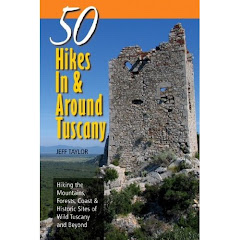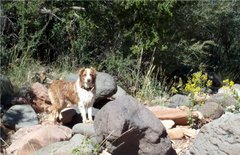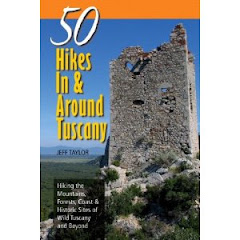Distance: 4.1 miles (6.6 km) round trip
Difficulty: Moderately Strenuous
Elevation: 50-1350 feet (15 - 410 meters)
Time of Year: Year Round
Valencia Peak is located in the heart of Montana de Oro State Park, located just south of Morro Bay and northwest of San Luis Obispo. This 1350 foot peak offers spectacular views of the Central Coast and Cuesta Ridge and gives a hiker a good upclose look at the unique coastal sage scrub habitat. The trail is relatively short, at just about 2 miles one way, but it is pretty steep, climing 1300 feet in elevation over that time. Thus, you quickly have great views and they continue to get more expansive as you climb.
The view of the coast from the trailhead
To access the trail, you drive south from Morro Bay or north from San Luis Obispo on CA Highway 1. Take the exit for Los Osos, which also has brown signs for Morro Bay State Park and Montana de Oro State Park. From this point on, just keep following the brown signs for Montana de Oro State Park through the town of Los Osos (Valley of the Bears). The road will enter the state park and you will pass numerous trails and eucalyptus groves. Keep driving until you reach the campground and the trailhead is located on the left just after the campground.
Hilina and Jeff starting out from the beginning of the trail
The parking area may be busy, because the bluffs trail leaves to the left and that easy trail along the bluffs and to the Corallina Tidepools is very popular. The trail starts out in a mixed sage scrub/grassland habitat. Be on the lookout for small hidden poison oak at the edge of the trail and ticks on the grass. The trick is, don't be first on the trail. Let others brush the ticks off the overhanging grass first.
The false summit in the foreground and Valencia Peak behind it
As of mid-April, the trail has not been cleared by the trail crews, so there was a significant amount of grass and brush overhanging the trail, so be on the look out. But, I am sure they will clear it soon. The trail heads across an ancient marine terrace (formerly under water) made up of conglomerates. Then, it climbs up to a platform and heads steadily across the sage scrub toward a smaller hill below Valencia Peak beyond it.
At first it seems weird to be climbing this smaller hill, as it looks like you should go around it to the main peak. But, as you will find out at the top, it is actually connected to Valencia Peak by a ridge. The trail then wraps around Valencia Peak proper past beautiful lupines, poppies, and indian paintbrush.
While on the ridgeline between the two hills, a huge basin drops down to the sea. It really reminds me of what hiking on the Channel Islands must be like (although I haven't been). It just seems so wild and untouched.
At the summit, there are beautiful views of Cuesta Ridge and its cypress stands, Morro Rock and several of the other 9 "morros", and the coastline. Despite the numerous trails across the state park that are visible from the summit, it is recommended you return the way you came, as the others were described by located as very "ticky" and "full of poison oak".
The view from the summit
One thing you may notice is how grasses dominate the sunny south slopes that are more arid and less shaded, while scrubs dominate the slightly cooler north-facing slopes
Poppies on the way down





























